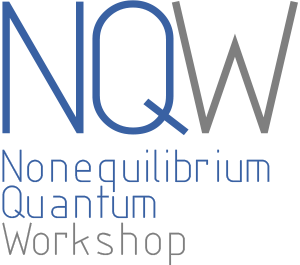
- This event has passed.
Photoinduced modulation of the excitonic resonance via coupling with coherent phonons in a layered semiconductor
December 16, 2021 @ 10:45 - 11:00 CET
S. Mor,1,2 V. Gosetti,1,2,9 A. Molina-Sanchéz,3 D. Sangalli,4,6 S. Achilli,5,6 V. F. Agekyan,7 P. Franceschini,1,2,8 C. Giannetti,1,2 L. Sangaletti,1,2 S. Pagliara1,2
1Department of Mathematics and Physics, Università Cattolica, I-25121 Brescia, Italy
2Interdisciplinary Laboratories for Advanced Materials Physics (I-LAMP),
Università Cattolica, I-25121 Brescia, Italy
3Institute of Materials Science (ICMUV), University of Valencia, Catedrático Beltrán 2, E-46980 Valencia, Spain
4Istituto di Struttura della Materia-CNR (ISM-CNR), Division of Ultrafast Processes
in Materials (FLASHit), Area della Ricerca di Roma 1, Monterotondo Scalo, Italy
5Dipartimento di Fisica, Università degli Studi di Milano, via Celoria 6, 20133 Milano, Italy
6European Theoretical Spectroscopy Facility, ETSF
7St. Petersburg State University, St. Petersburg, 199034, Russia
8Department of Physics and Astronomy, KU Leuven, Celestijnenlaan 200D,
3001 Leuven, Belgium
9Department of Materials Engineering, KU Leuven, Kasteelpark Arenberg 44,
3001 Leuven, Belgium
The discovery of graphene in 2004 has opened a new field of research about two-dimensional (2D) materials. Nowadays, by virtue of the tunability of their electronic and structural properties, 2D materials are applied in a great variety of areas like, for example, sensors, energy storage, and photonic devices. Among the emerging 2D materials, we have focused our attention on the van-der-Waals-layered semiconductor bismuth tri-iodide (BiI3).
First of all, BiI3 exhibits a clear and isolated absorption resonance in the visible range, detectable also at room temperature. Besides this, the lattice vibration is dominated by an out-of-plane Ag mode. The co-presence of these two degrees of freedom makes BiI3 an ideal candidate to be used in the investigation of exciton-phonon coupling.
However, how exciton-phonon coupling manifests in the time and energy domains is still an open debate between experiment and theory. Through time-resolved broadband reflectivity, we investigate the ultrafast optical response of BiI3 single crystal. Our measurements reveal a multi-step electron relaxation dynamic with time constants that range from a few hundreds of femtoseconds up to tens of nanoseconds, superimposed by a periodic intensity modulation ascribed to the generation of coherent optical phonons. Here, we will focus only on the coherent optical response of BiI3.
Our joint theoretical and experimental effort allows uncovering the relationship between the photoinduced periodic excitonic energy modulation and the generation of coherent optical phonons. Moreover, employing ab-initio DFT calculation coupled with a transient analysis of the experimental results, we were able to extrapolate the photoinduced atomic displacement in the real space from the excitonic energy modulation.
In conclusion, with our work([1]), we set the spectral fingerprints for the optical detection of exciton-phonon coupling in layered semiconductors. Moreover, our findings represent a step forward on the road to coherent manipulation of the excitonic properties on ultrafast timescales.
- S. Mor et al. Phys. Rev. Research, accepted


